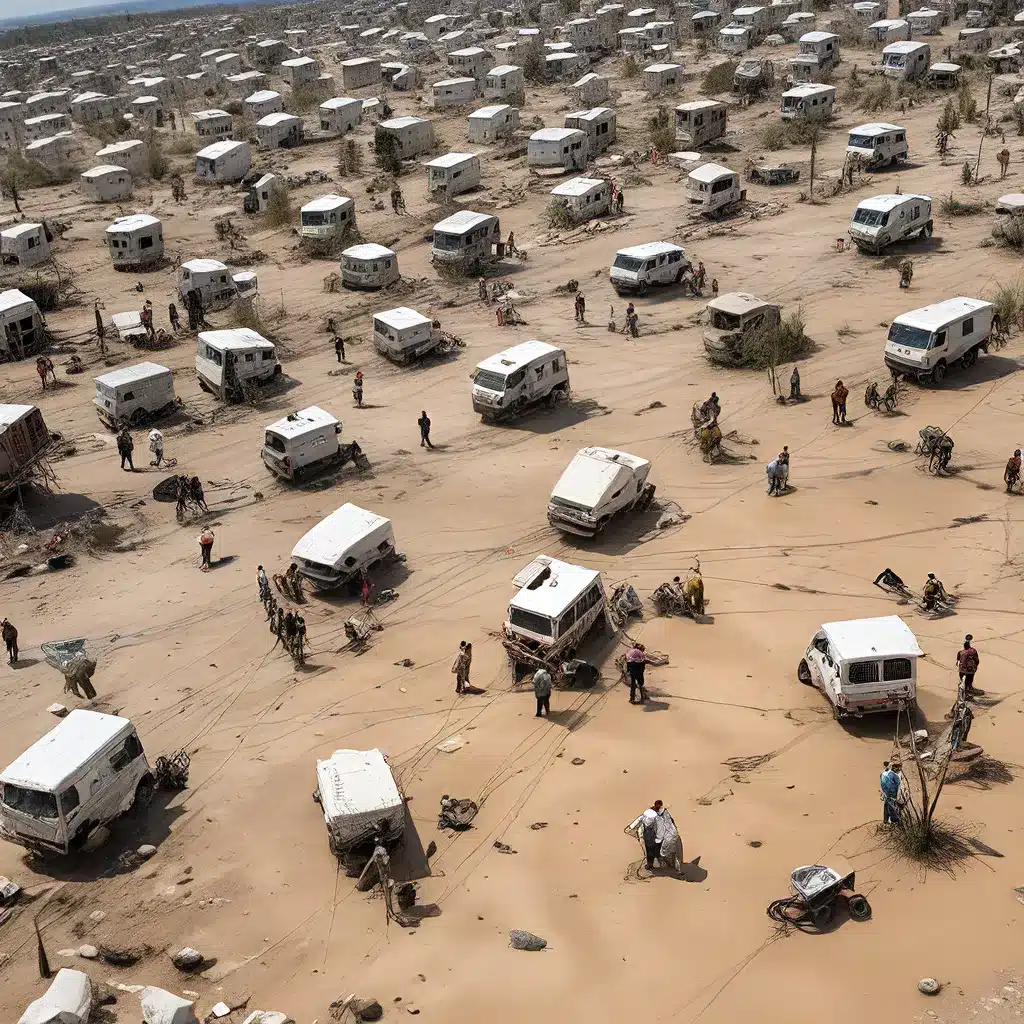
Harnessing Sensor Networks for Enhanced Disaster Response
Disasters, both natural and man-made, are becoming more frequent and severe due to a convergence of anthropomorphic and climatological factors. These heightened risks necessitate novel approaches to decrease morbidity and mortality driven by disasters. One such approach is the strategic deployment of distributed sensor networks to provide real-time situational awareness (SA) during disaster response operations.
Effective disaster response requires emergency managers to have a complete understanding of the situation in the field, also known as situational awareness (SA). However, obtaining comprehensive SA is particularly challenging during a disaster due to logistical challenges in collecting and disseminating complete and high-quality information from first responders to Emergency Operations Centers (EOCs), the constantly shifting needs and resources in the field, and organizations using different information-sharing platforms.
Emerging technologies, if appropriately applied, have the potential to revolutionize disaster response operations by enhancing SA and enabling responders to make quicker, more accurate decisions. This article explores the role of distributed sensor networks in improving real-time SA during disaster response, addressing key considerations such as security, energy management, and data integration.
Distributed Sensor Networks for Disaster Response
Distributed sensor networks are a critical component of the Internet of Things (IoT) ecosystem, enabling the collection, analysis, and dissemination of real-time data from multiple sources. These networked sensors can be strategically deployed across disaster-affected areas to provide enhanced situational awareness to emergency responders and decision-makers.
Improving Situational Awareness
Situational awareness (SA) is a crucial element of effective disaster response, allowing emergency managers to make informed decisions about the allocation of limited resources and the coordination of response efforts. Distributed sensor networks can significantly enhance SA by:
-
Rapid Data Collection: Networked sensors can quickly gather and transmit critical data, such as environmental conditions, infrastructure status, and the location and status of first responders and victims.
-
Comprehensive Monitoring: Sensor networks can provide a comprehensive, real-time view of the evolving situation, enabling responders to adapt their strategies based on the changing landscape.
-
Integrated Data Visualization: By aggregating data from multiple sensors, responders can leverage advanced data visualization tools to gain a clear, intuitive understanding of the disaster situation.
-
Interoperability and Information Sharing: Distributed sensor networks can facilitate seamless information sharing between various response agencies and EOCs, ensuring a common operating picture and coordinated decision-making.
Addressing Security Challenges
As distributed sensor networks become integral to disaster response, security is a critical concern. Sensor networks can be vulnerable to cyber attacks, data breaches, and physical tampering, which could compromise the integrity and reliability of the information they provide. Strategies to address these security challenges include:
-
Secure Communication Protocols: Implementing encryption and authentication mechanisms to protect data transmission between sensors and central platforms.
-
Sensor Hardening: Designing sensors with tamper-resistant hardware and secure firmware to prevent unauthorized access and manipulation.
-
Resilient Network Architecture: Deploying redundant and decentralized network topologies to ensure continued operation even in the event of localized infrastructure failures.
-
Comprehensive Threat Monitoring: Leveraging advanced analytics and machine learning to detect and respond to potential security threats in real-time.
Energy-Efficient Design
Disaster response often takes place in areas with limited or disrupted power infrastructure, making energy management a critical concern for distributed sensor networks. Strategies to improve the energy efficiency of sensor networks include:
-
Low-Power Sensor Nodes: Designing sensor hardware and firmware to minimize power consumption, enabling extended deployment durations without the need for frequent battery replacements.
-
Energy Harvesting: Integrating renewable energy sources, such as solar panels or vibration-based harvesters, to enable sensor nodes to recharge themselves autonomously.
-
Intelligent Power Management: Implementing dynamic duty cycling and adaptive sampling algorithms to optimize the tradeoff between data resolution and energy consumption.
-
Decentralized Processing: Leveraging edge computing and fog computing architectures to perform data processing and analysis closer to the sensor nodes, reducing the need for energy-intensive data transmission to central platforms.
Seamless Data Integration
Disaster response often involves a diverse array of stakeholders, each with their own data sources and information systems. Distributed sensor networks must be able to seamlessly integrate with these disparate systems to enable a common operating picture and facilitate effective decision-making. Strategies to address this challenge include:
-
Interoperable Data Formats: Adopting standardized data formats and communication protocols to ensure compatibility across different sensor networks and information systems.
-
Unified Data Platforms: Developing centralized data aggregation platforms that can ingest and harmonize data from multiple sensor sources, as well as other data streams (e.g., social media, weather data).
-
Intelligent Data Fusion: Applying advanced analytics and machine learning techniques to fuse data from various sources, identify patterns, and generate actionable insights for responders.
-
Intuitive Visualization: Designing user-friendly dashboards and geospatial displays that allow decision-makers to easily interpret the integrated data and make informed decisions.
Transforming Disaster Response with Distributed Sensor Networks
Distributed sensor networks have the potential to revolutionize disaster response by providing real-time, comprehensive situational awareness to emergency managers and first responders. By addressing key challenges related to security, energy management, and data integration, these networked sensor systems can become a vital tool in the arsenal of disaster response agencies.
As the frequency and severity of disasters continue to rise, the strategic deployment of distributed sensor networks can help save lives, mitigate damages, and improve the overall efficiency and effectiveness of disaster response operations. By harnessing the power of these advanced technologies, emergency managers can make more informed decisions, coordinate better-targeted response efforts, and ultimately enhance the resilience of communities in the face of increasingly complex disaster scenarios.
To learn more about how your organization can leverage distributed sensor networks for improved disaster response, explore the resources available on the Sensor Networks website.